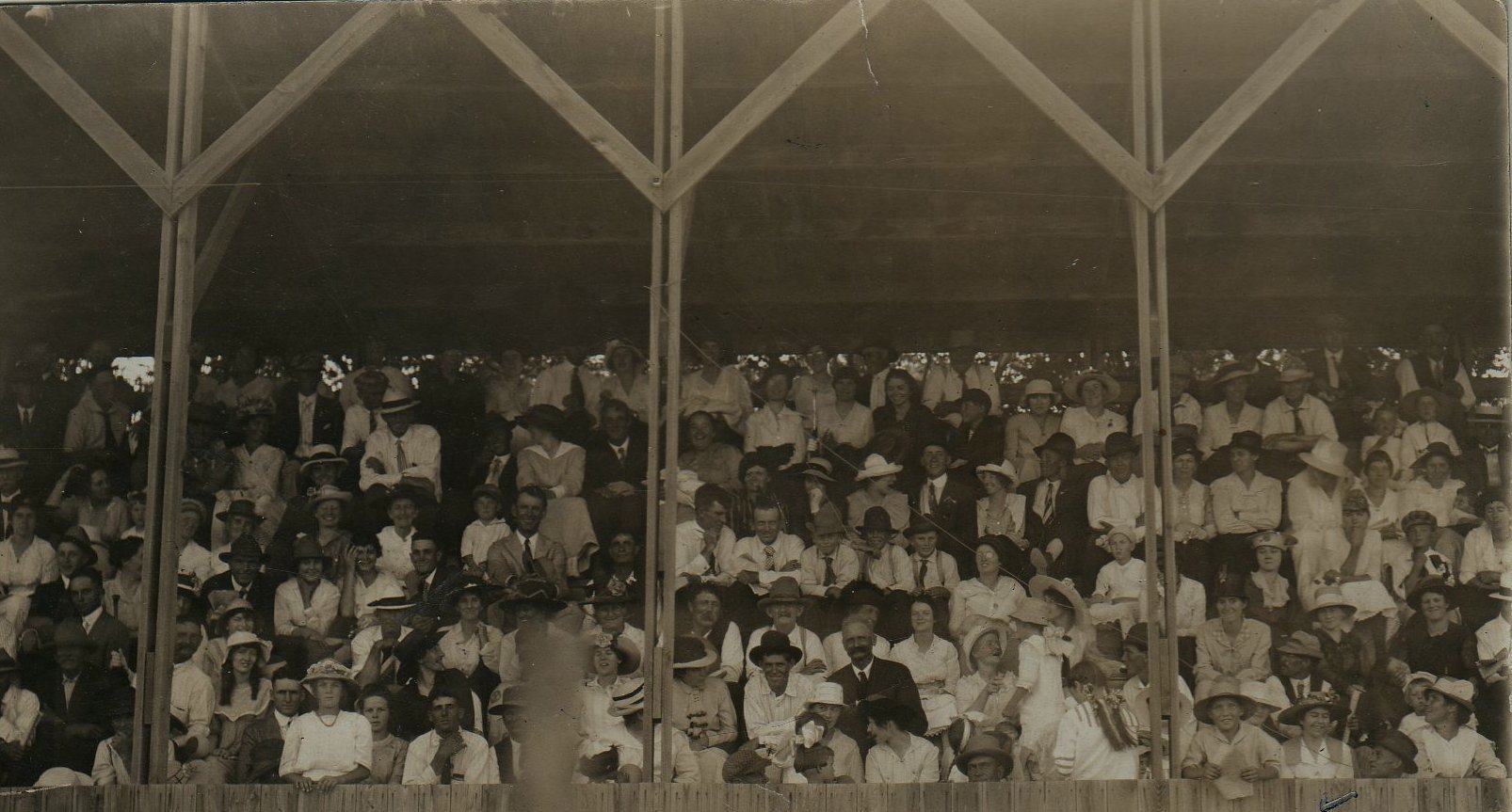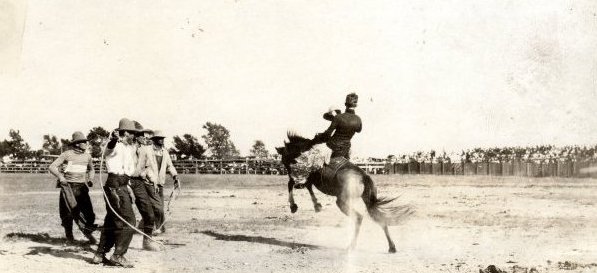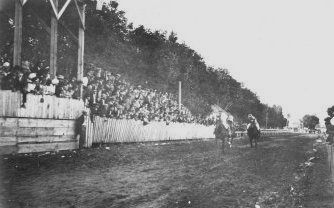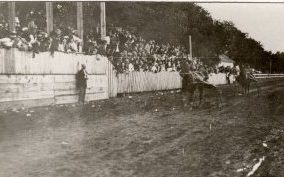The Kearny County Fair is a long-standing tradition that began in 1914 in a shady grove just west of Lakin. The fairgrounds were west of present-day Bopp Boulevard between Lincoln and Railroad avenues on the timber claim of F.L. Pierce where he had planted walnut, Osage orange, cottonwood, locust, catalpa and mulberry trees in the 1880s. Through Pierce’s continued efforts, the fairgrounds became a shady picnic ground. A large grandstand sufficient to hold 400 or more people overlooked a half-mile race track and baseball park, and amusements and lunch counters dotted the grounds under the shade of the walnut trees.
The highly anticipated fair opened Thursday, Sept. 24, and attendance for the first two days was estimated at 1,100. Even Lakin’s schools closed so that all the children and teachers could have the opportunity to attend. The Lakin Independent reported that Pierce, who was the fair association’s secretary, “was in the ticket office shoving out the tickets and gathering in the nickels. Crowds from the four corners surged through the ground looking over the displays of machinery, farm products, horses and cattle, quilts, needlework, finery, etc.” To maintain order and make all fair visitors feel at home, the fair association recruited a squad of mounted police.
Horse racing was a big draw of the fair. Good purses attracted owners of some of the best horses in the country. Categories included pony racing, horse racing, ladies riding, Roman racing, harness trotting race and a relay race, but the racing was not limited to horses. There were also foot races, auto races and dog races. Other competitions included wrestling, a potato race on horseback, a sack race, bucking broncos, greased pig contest, and a challenge to see who could stay under long enough in a tub filled with water to secure a big silver dollar with their teeth. Fair-goers were also entertained by the Lakin band, the “hippodrome” or equestrian riding performance, and pole-vaulting demonstrations. A baseball game was played in the late afternoon each of the three days, and every game was called before ending because of darkness. Lakin, Deerfield, Midway and South Side were the competing teams, with Deerfield taking the championship game, 5-3.
That year was a very good year for gardeners, and produce entries ranged from grapes and sweet potatoes to an 80-pound pumpkin. Crops of wheat, corn, rye, oats, and broom corn were also entered. The poultry department had a good showing of geese, ducks, turkeys and chickens. Mules, a fawn and even guinea pigs were on display. Baked goods, handiwork and art rounded out the line-up.
The Oct. 2, 1914 Advocate declared, “The fair is over and success is written in large letters by the large number of people who attended the exhibition.” The Kearny County Fair Association attributed much of the fair’s success to local farmers and other exhibitors but also gave credit to those from Grant County who had entered items in the fair.
The movement for a county fair and fairgrounds had begun two years earlier. Stocks in the Kearny County Agriculture and Fair Association were sold for $10 each, and a board of directors was elected in the spring of 1914 to lead the organization. The association secured a membership in the Grain Belt Racing Association in May of 1914, and the fairgrounds were officially opened on June 13th with a running race between George Rider’s and William Gillespie’s horses followed by a baseball game.
The annual fair took a hiatus in 1918 and 1919 during World War I but resumed in 1920. As time progressed, more buildings were added and amusements and lunch counters increased. The fair took on a carnival air adding such amusements as a tug-of-war between communities, motorcycle races, airplane exhibitions, and a fat man’s race. The hard times of the 1930s forced the fair association to disband and dismantle its buildings and discontinue the fair. About that time, 4-H club work was started, and the annual fair became a 4-H event. A location was hard to find so booths and home economics projects were displayed in stores, the courthouse or wherever possible. Livestock was exhibited in some vacant lot, in the lumber yard or on a town street where trees could provide shelter. A few interested persons started working on a regular location for a fair and other entertainment early in 1950. Many were interested in horses so the Kearny County Saddle Club was organized, and Mr. and Mrs. Charles A. Loucks deeded a tract of land where the rodeo and fairgrounds are now located.
When county commissioners were preparing their budget for 1957, they approved the allocation of funds to operate a free county fair and the establishment of a fair board. Although the fairs may look differently than they did in the 1900s, commissioners, fair boards, the Kearny County Extension Service, 4-H groups, Kearny County Saddle Club, and other organizations, businesses and individuals have worked cooperatively through the years to ensure that the tradition that started over a century ago continues.
If you get the opportunity, venture out to the rodeo and fairgrounds this weekend and next week to partake in the fun at the Kearny County Saddle Club’s annual amateur rodeo and the Kearny County Fair! And don’t forget to attend the rodeo parade Saturday morning at 10 a.m. followed by a free ice cream social at the Kearny County Museum!




Sources: History of Kearny County Vol. I; Advocate and Lakin Independent archives; museum archives.
